What are vital signs?
vital signs generally refers to the quantification of vital signs. It is quantified, displayed in a visible form, and used by doctors, nurses, and paramedics to make decisions about what to do to survive. Listed below are general items for vital sign numbers.
● body temperature: Hypothermia, hyperthermic respiratory state
● blood pressure: Systolic/diastolic, pulse pressure
● heartbeat: number and rhythm
● breathing: Breathing frequency, breathing pattern, SpO2
● consciousness: excitatory system, lightheaded system or coma
● urine volume: Mandatory for inpatients
How to measure vital signs
The electrocardiogram (ECG) Heart rate variability (HRV) How to measure plethysmography and photoplethysmography PPG) Pulse rate fluctuation due to (PRV) There is a way to measure it.
ECG
ECG (electrocardiography) is a method that uses bioelectrodes to measure the electrical pulses produced by the electrical activity of the heart. To measure HRV (heart rate variability), changes in the time interval between heartbeats (heartbeat interval) are measured from the ECG waveform obtained from electrodes attached to the body.
PPG
PPG (photoplethysmography) is a method that uses light to measure volume changes in peripheral blood vessels caused by blood pumped out by the expansion and contraction of the heart. To measure PRV (pulse rate variability), an LED is used to shine light on the human skin, and a photodiode measures changes in the intensity of the light caused by blood flow.The changes in the time interval of the pulse wave obtained are measured using a photodiode. Measure.
Analog Devices' vital signs measurement solutions employ a variety of integrated and discrete sensor and signal conditioning technology solutions that enable portable, wearable, and bedside monitoring systems. Masu.
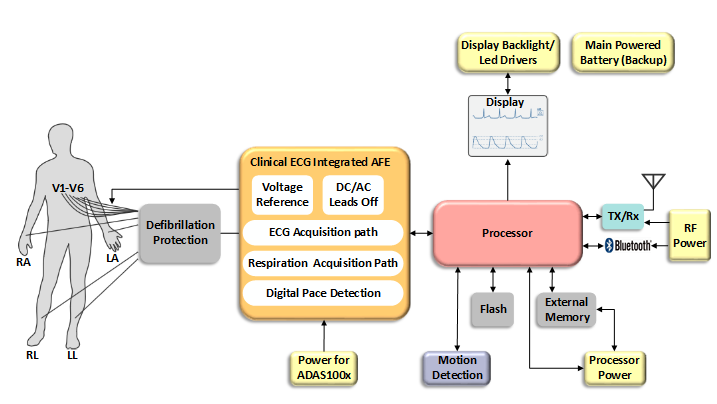
Normally, various components such as operational amplifiers, MUXs (multiplexers), and AD converters are required for the AFE and the parts represented by the blocks in the diagram above.
By using a compact solution provided by Analog Devices that has all the necessary functions on a single chip, it has a highly integrated analog front end with low noise, high precision, and multi-channel functionality that can be installed in wearable devices. It is possible to realize a compact package and low power consumption assuming battery operation.
ADPD4100 Multimode Sensor Front End
Product Summary
The ADPD4100/ADPD4101 are full-featured multimode sensor front ends that excite up to eight light emitting diodes (LEDs) and measure return signals with up to eight separate current inputs. It can be used for a variety of biometric applications, including PPG (PPG), electrocardiography (ECG), and electrodermal activity (EDA).
Features
- Multimode analog front end
- 8 input channels with multiple operating modes for different sensor measurements
- Dual-channel processing with simultaneous sampling
- 12 programmable time slots for synchronized sensor measurements
- Input multiplexing for differential and single-ended sensor measurements
- 8 LED drivers capable of driving 4 LEDs simultaneously
- Ambient Light Rejection: 60dB to 1kHz
- Total system power consumption: 30 μW
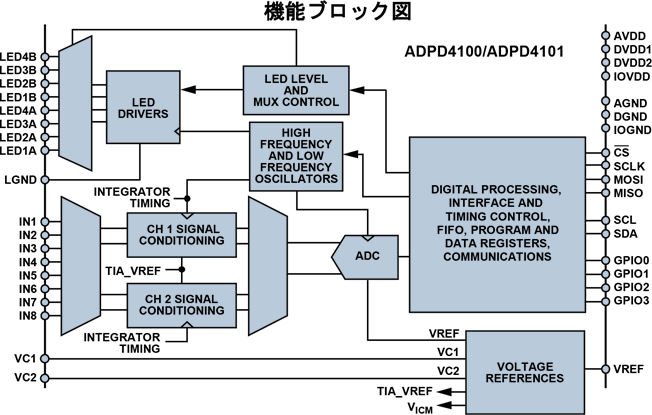
The ADPD4100/ADPD4101 have the features described above. From here, we will explain the role of each block and the evaluation board.
LED driver
The LED driver has 8 LED drivers and can drive up to 4 LEDs at the same time. The measurement section includes a trans-impedance amplifier (TIA), bandpass filter (BPF), integrator, and A/D converter, and the digital processing section includes a controller that controls 12 time slots, decimation, subsampling, Equipped with FIFO.
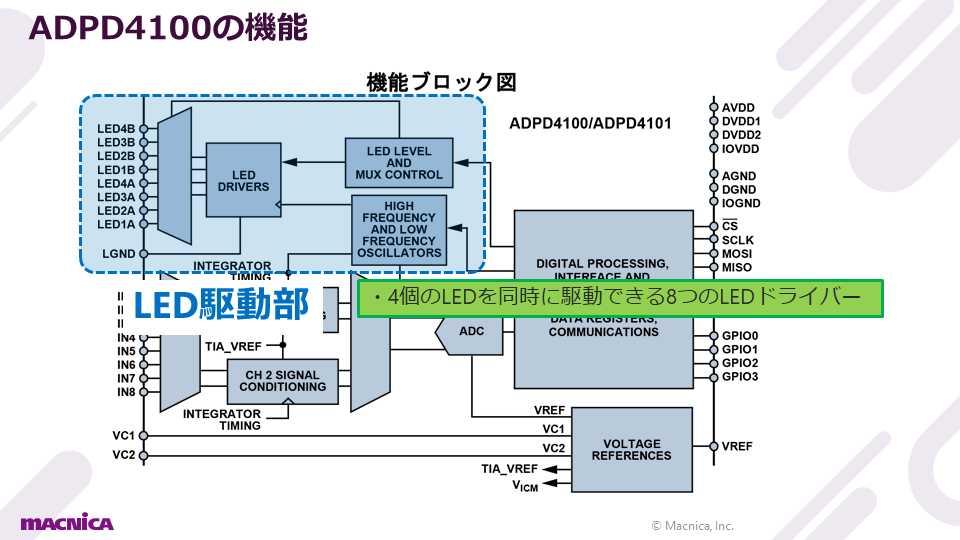
Measuring part
The measurement section includes a transimpedance amplifier (TIA), a bandpass filter (BPF), an integrator, and an analog-to-digital converter (ADC). Analog signals are selected from eight inputs as single-ended or differential pairs using a multiplexer and sampled using a 14-bit A/D converter. A synchronous modulation method that combines pulses as short as 1 μs and a bandpass filter provides 60 dB of AC ambient light rejection, which is automatically performed internally.
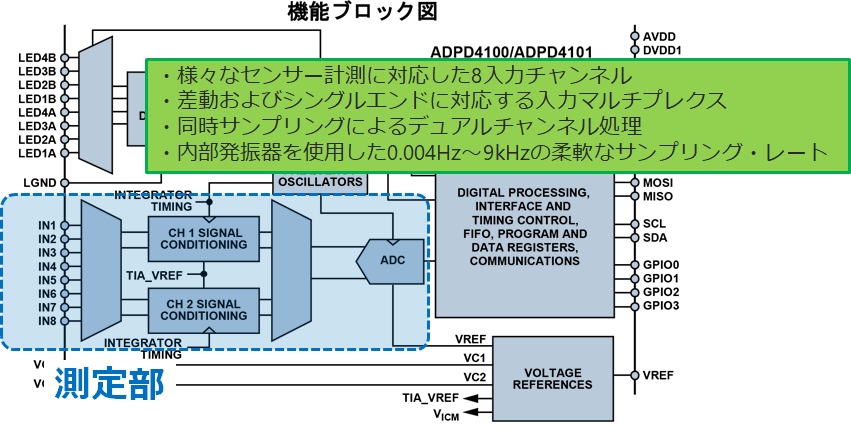
Digital processing part
The digital processing section has a controller controlling 12 time slots, decimation, subsampling and FIFO.
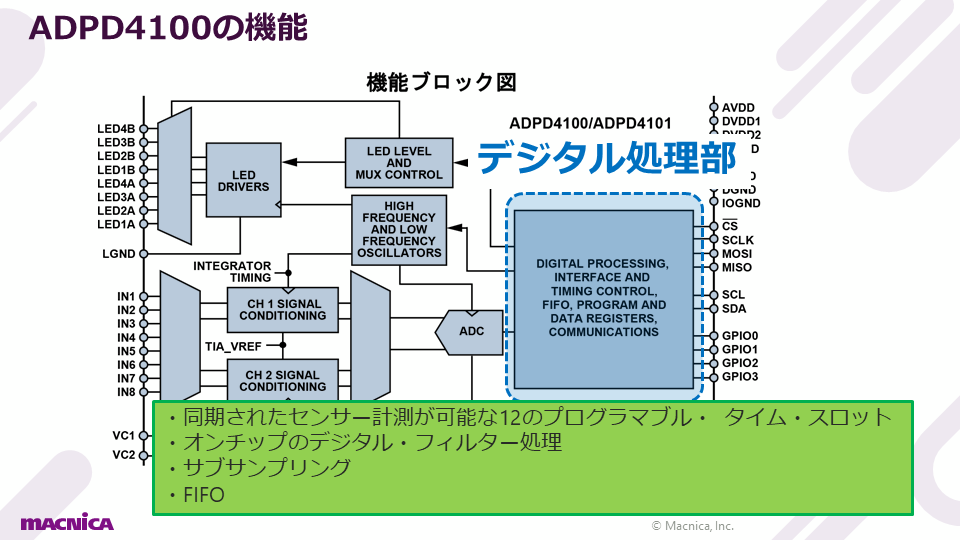
ADPD4100 Evaluation Kit ~EVAL-ADPD4100Z-PPG~
The EVAL-ADPD4100Z-PPG evaluation board allows vital sign measurements. The sensor board has an ADPD4100 on the front and 3 green, 1 infrared, and 1 red LEDs and a photodiode on the back. The control board is equipped with an ARM microcomputer, a Bluetooth module, and a battery, and acquires data wirelessly.
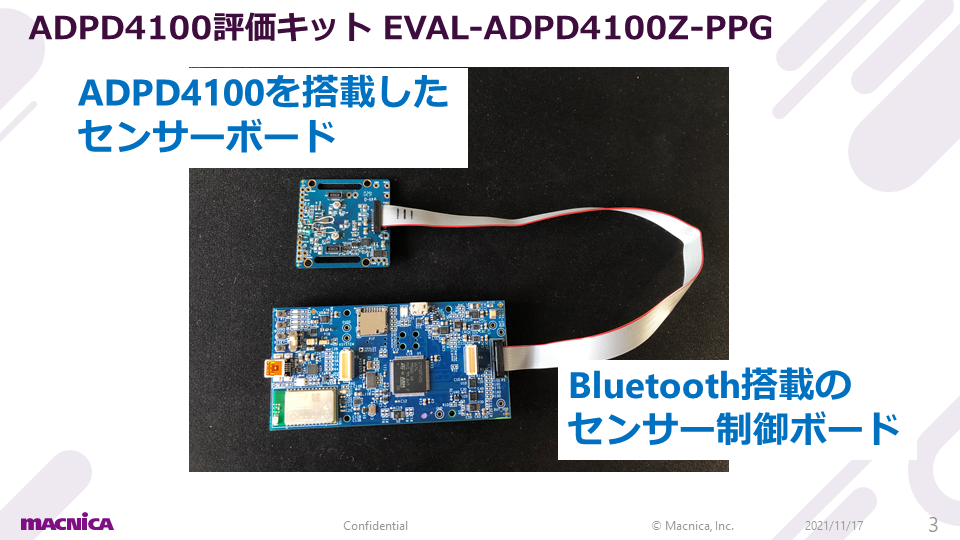
Demonstration video of vital sign measurement using ADPD4100
Please take a look at the demo video using the evaluation board for the AFE "ADPD4100" for vital sign measurement.After introducing the features of the product, we measure heart rate using electrical signals (ECG) and pulse waves using light (PPG), so youcan see how vital sign measurement actually works.
Summary
● The ADPD4100/4101 excites up to eight light emitting diodes (LEDs) and measures the return signal with up to eight separate current inputs.
A fully featured multi-mode sensor front end.
● Can be used as a sensor hub for synchronous measurement of photodiodes, biopotential electrodes, resistance, capacitance, and temperature sensors.
● Multiple operating modes allow photoplethysmography (PPG), electrocardiogram (ECG),
A wide range of sensor measurements are available, including electrodermal activity (EDA), impedance, capacitance, temperature, gas detection, smoke detection, and aerosol detection.
Application example
● Wearable monitoring devices for healthcare and fitness
- Heart rate monitor, heart rate variability, stress, blood pressure estimation, SpO2, body water content, body composition
● Industrial monitoring equipment such as CO, CO2, smoke, and aerosol detection
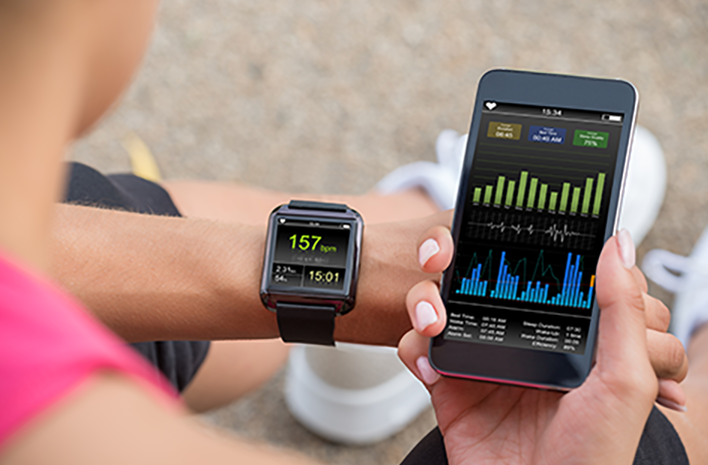

Click here to purchase products
Click here for manufacturer site/other related links
- Measurement of vital signs
- Enabling multi-parameter vital signs monitoring systems has never been easier.
- ADPD4100 data sheet (various data can be downloaded here)
- ADPD4101 data sheet and product information (various data can be downloaded here)
- ADPD4100/4101 evaluation board (various data can be downloaded here)
Inquiry
If you have any questions regarding this article, please contact us below.
Analog Devices Manufacturer Information Top
If you want to return to Analog Devices Manufacturer Information Top, please click the button below.
